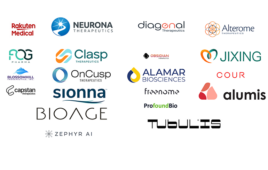Here are a few real estate and facility management strategies to help you get your pharma R&D lab up and running amid the COVID-19 pandemic, courtesy of commercial real estate outfit JLL.
Roger Humphrey, JLL

[Photo by Fusion Medical Animation on Unsplash]
It won’t be easy, given the pandemic’s colossal impact. Every company will have its own best path to reopening, based on variances in local regulations and capital flow. But there are four key real estate and facility management strategies that can support leaders through this crisis:
1. Harness the power of data to support social distancing and space planning.
To make the best use of your facility, while safeguarding employees, understand first how your people interact with the lab space itself. Do they typically work side by side on benches? How much space is already designated for more private work?
While the average lab is less dense than the average office space, social distancing will still prove challenging given the collaborative nature of pharmaceutical development and production. Therefore, it’s important to lay out criteria for social distancing floorplans that reflect real-world employee space demand, and also accommodate both epidemiological guidelines and employee comfort levels.
With data-driven insights, you can evaluate occupancy and/or space planning strategies based on how they affect safety and business. For example, rotating staffing may help limit the number of staff on-site at any one time, but it may also compromise productivity. Or, if you’re in a position to grow, you may want to consider how a shorter, flexible lease could support rapid upsizing and downsizing as conditions evolve.
2. Ramp up health, quality and safety procedures.
Of all industries, the pharmaceutical world is perhaps best-equipped when it comes to meeting COVID-19 safety standards. After all, what lab doesn’t already have robust guidelines for handwashing and personal protective equipment like lab coats, gloves and eyewear?
In addition to updating standard practices, your company must ensure all personnel–from scientists to facility managers–understand and adhere to them. Janitorial teams will need to perform intensive cleaning even more regularly. HVAC maintenance teams will need to monitor air quality and heating, ventilation and air conditioning operations more closely to curb contagion risk. Human resources teams may need to devise a means of checking temperatures at all entry points.
3. Use technology to drive efficiency in your post-COVID-19 workplace.
To help facilitate social distancing requirements, you might incorporate real-time WiFi login and security badge data, along with data from heat and motion sensors. In turn, data from these occupancy planning tools, together with predictive analytics tools, can help you better assess future needs.
On the facility management side, consider deploying smart building systems and wireless equipment sensors to better manage indoor air quality, supporting employee health while also reducing energy costs and overall operating expenses.
4. Consider how remote work could eventually become more viable.
Already, as more and more data scientists enter the R&D process, we’ve seen an industry shift from mostly wet lab space, to a more even mix of wet lab, flex lab and computational science space. Such teams, who can function effectively in an office-like space, may also be able to work remotely without too much disruption.
Enabling some amount of virtual lab work could be a boon for some companies even beyond COVID-19. Leasing, for instance, could become more viable, giving firms the flexibility to expand or contract as market conditions change. Conversely, larger companies with their own large campuses could consider sale/leasebacks to monetize their space and/or exit some of it if not needed.
What’s beyond the pandemic for research facilities?
No one has a crystal ball for how this–or any industry for that matter–will emerge on the other side of COVID-19. Now is the time to take a fresh, holistic approach at your portfolio. How can you best support your workforce with safe, effective work environments? How might more comprehensive facilities management support health, in addition to productivity?
By considering these questions through a post-COVID-19 lens, pharmaceutical leaders can help keep the industry ahead of even the most challenging of curves.
Roger Humphrey is the executive managing director and global leader of JLL’s Life Sciences practice.
Filed Under: Drug Discovery and Development, Infectious Disease





Tell Us What You Think!
You must be logged in to post a comment.